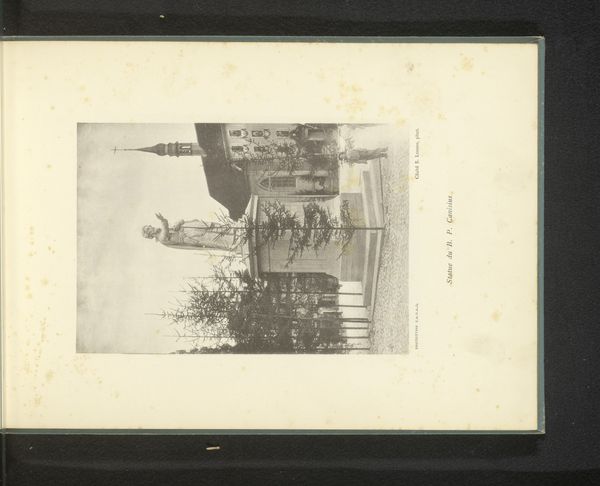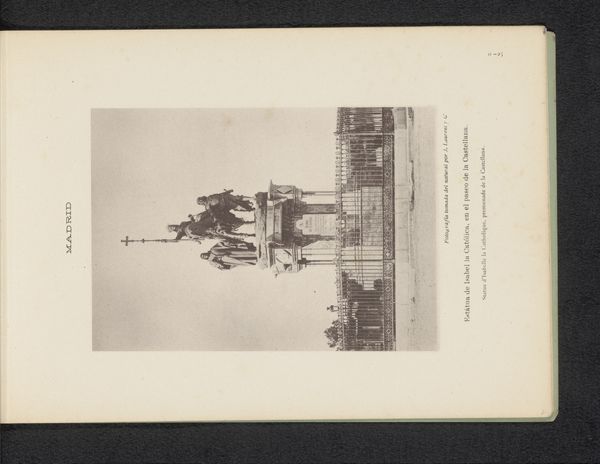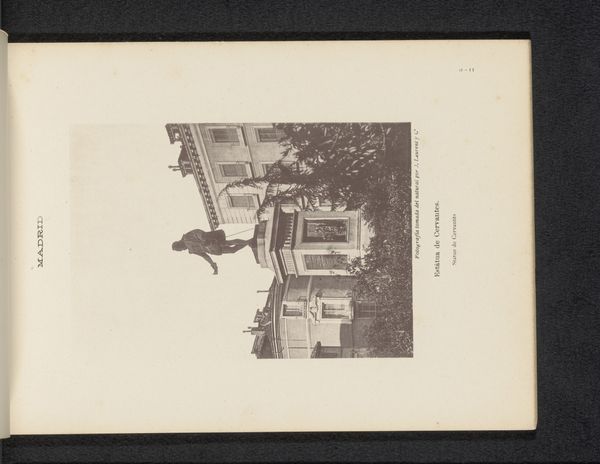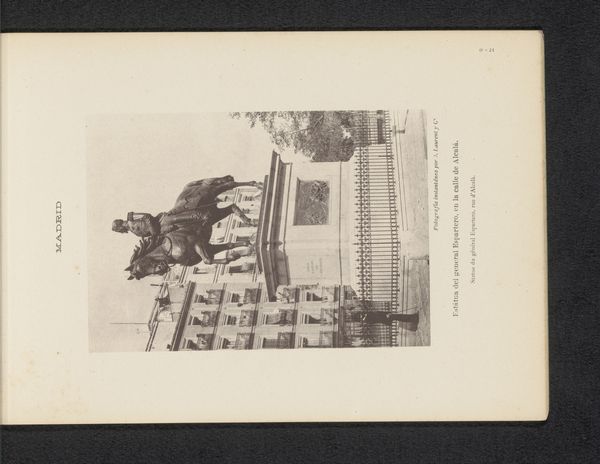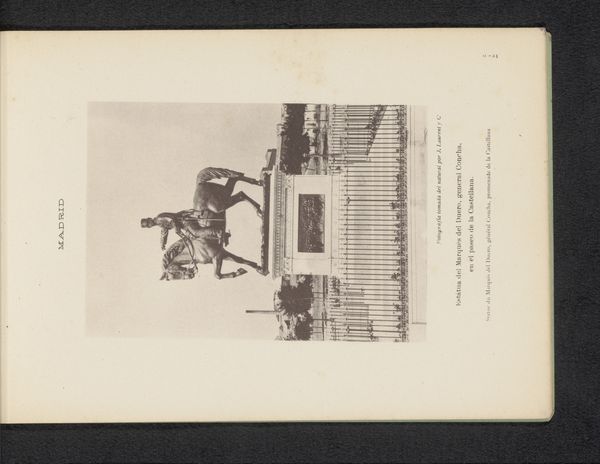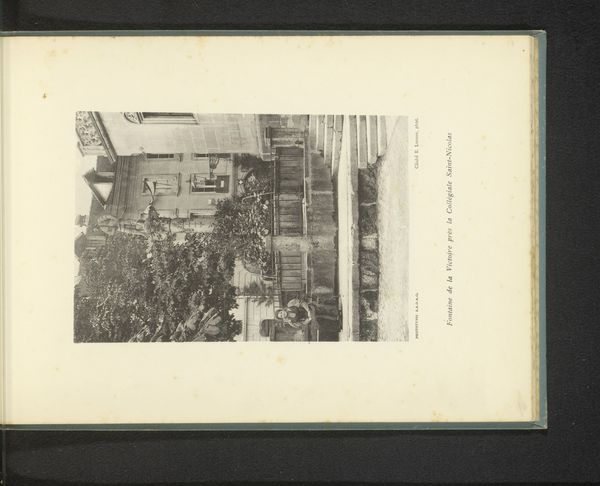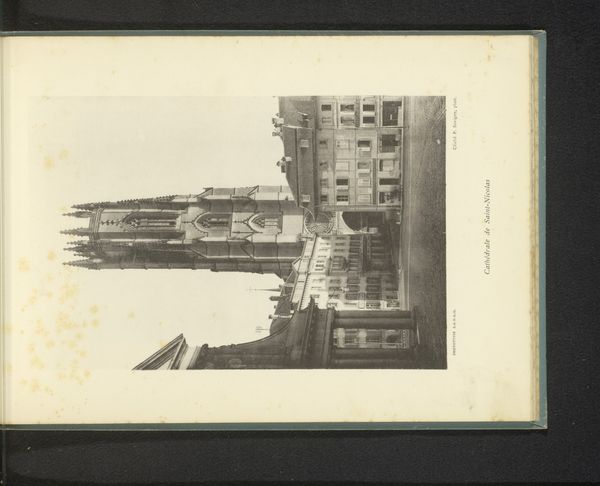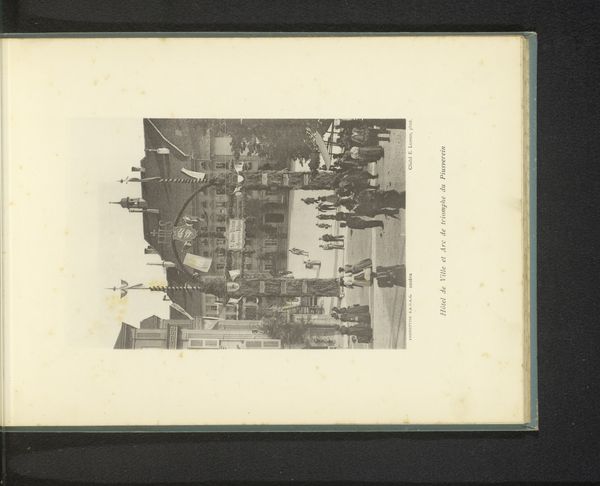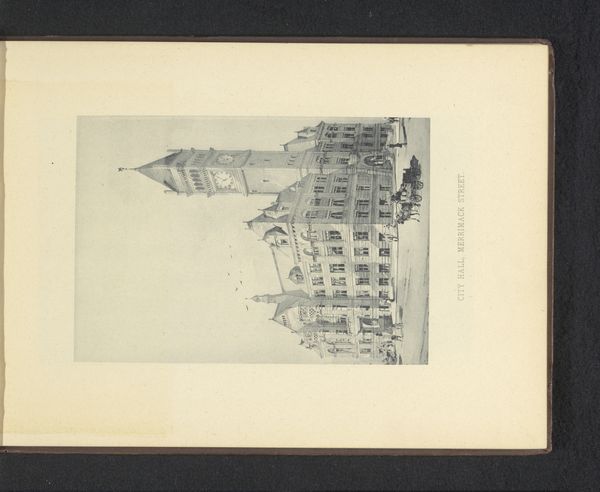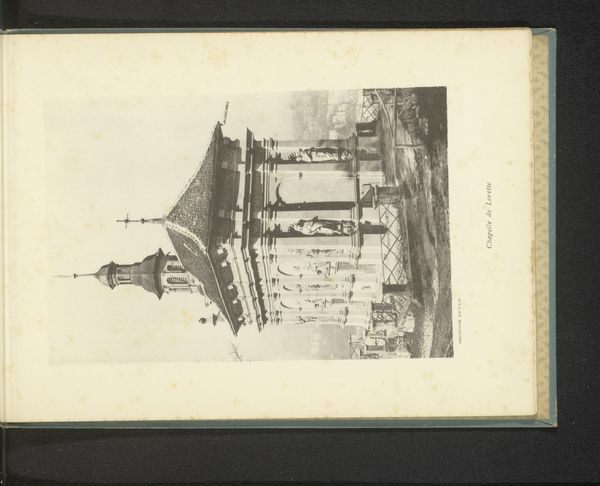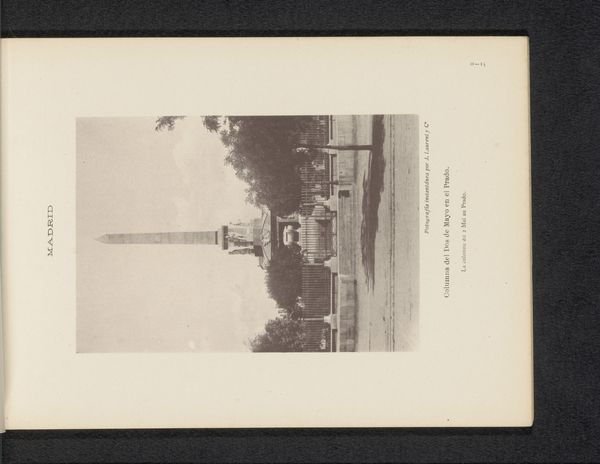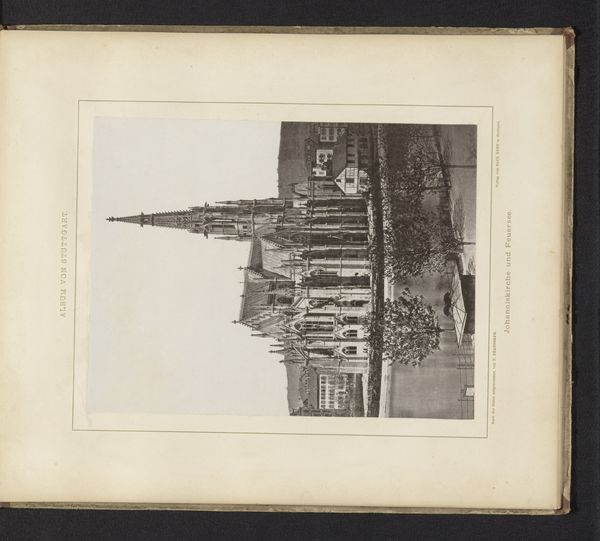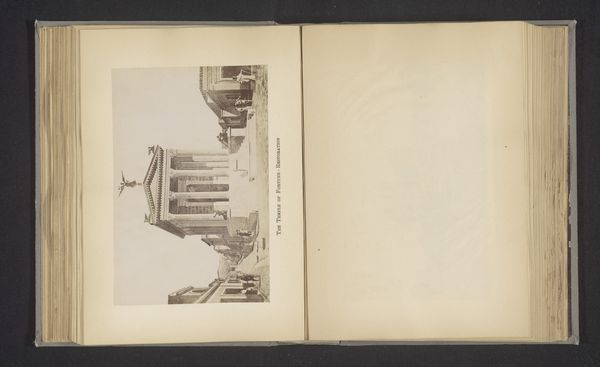
Ruiterstandbeeld van Filips IV van Spanje op het PLaza de Oriente in Madrid c. 1880 - 1890
0:00
0:00
juanlaurent
Rijksmuseum
Dimensions: height 147 mm, width 103 mm
Copyright: Rijks Museum: Open Domain
Editor: Here we have "Ruiterstandbeeld van Filips IV van Spanje op het Plaza de Oriente in Madrid," a photograph by Juan Laurent, dating from around 1880 to 1890. The sepia tones and the paper itself lend a nostalgic air. How do you read the composition of this albumen print? Curator: The composition invites a structured reading. Consider the tonal gradations. The monument itself exhibits a marked contrast, throwing it into relief against the slightly blurred background. Note the relationship between the monument's mass and the open space surrounding it. Laurent uses depth of field as a compositional element. Are you seeing a particular interplay of masses? Editor: I notice how the dark statue really pops, especially compared to the buildings in the background, which seem lighter and less defined. Also the statue and its base are monumental, taking up almost two thirds of the frame, while the top third is negative space, the sky. Curator: Precisely. Laurent exploits the tonal scale intrinsic to albumen prints to emphasize spatial relationships. The very crispness of the statue suggests a foreground element, while the gradual blurring of the buildings intimates depth. How do you see the monument relating to its immediate architectural environment in terms of form? Editor: The geometric shapes of the buildings create contrast with the rounded, organic forms of the equestrian statue, though the rectangular base of the statue repeats the geometric theme. So, form is echoed and amplified in both organic and structured ways. Curator: An astute observation. The tension between those forms—rectilinear versus curvilinear—generates visual interest. Note also the subtle diagonals created by the horse and rider's posture. Editor: So by focusing on the tones, forms, and their relationships within the frame, we can see how the artist constructs a particular perspective and feel, divorced from other elements. Thank you for clarifying that a formalist reading invites me to interpret shape relationships over symbolic meaning. Curator: Exactly, a fascinating piece through the play of light and form alone.
Comments
No comments
Be the first to comment and join the conversation on the ultimate creative platform.
